Museums, Theaters, Architecture, Rovinj
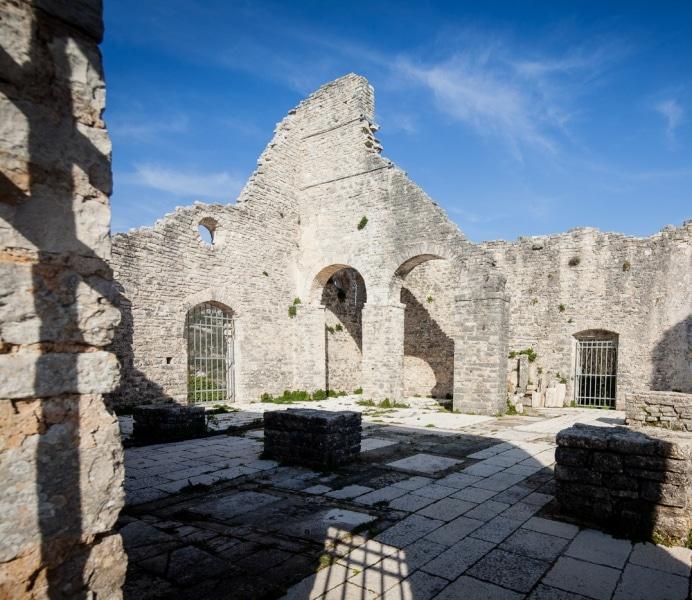
Removed from Unnamed collection
Dvigrad Ruins 
Only a few kilometres west of Kanfanar, the remains of the mediaeval town of Dvigrad are located, which still dominates the Lim Fjord. During Illyrian times, two colonies existed which later, in early mediaeval times, became two towns, Parentino and Moncastello. The former quickly became extinct, whereas the latter, in the ownership of the Aquileian patriarch, developed further under the name of Duecastelli. Lateron, like the most part of the Istrian coast, Dvigrad fell under Venetian power.
In the mid 17th century malaria and the plague were rifing in Istria, which didn't spare the citizens of Dvigrad either. Thus, in 1631 most of the 700 hundred inhabitants left the town, and the remaining three families left in 1714 when the church of St.Sophia was abandoned as well. The relics and the pulpit from the 14th century were transferred into the church of St. Silvester in Kanfanara, where the inhabitants of Dvigrad had moved as well.
The town is very well maintained since it hadn't been destroyed in the wars that were ravaging through Istria, but rather because it was abandoned by the inhabitants of the town. The town gates still exist, as well as two circles of the town walls, some of the defence towers are maintained, as well as the most part of the 200 houses. The St. Sophia Church was an early Christian church with three naves which dominated the town and which was built on solid rock. Unfortunately, because the church wasn't being maintained, it decayed in the 19th century. https://www.inforovinj.com/eng/rovinj/znamenje/dvigrad.asp
Map

Removed from Unnamed collection
Church of St. Euphemia 
A small church of St. George used to be situated where the Church of St. Euphemia is located today. When St. Euphemia's sarcophagus was brought to Rovinj, the Church of St. George became too small for all the pilgrims. In the 10th century, the people of Rovinj started building a new, bigger church.
It was a three-nave church with three projected apses and wooden statues of St. George and St. Euphemia. At the beginning of the 17th century, a new gold-plated stone statue was erected which until this day remains on the altar of the Saint.
The church itself required with time more and more reparations, and the town population grew so that the people of Rovinj decided to build an even bigger church. The building process started in 1725 and lasted until 1736. Three main altars were built in 1741, and the organ was installed in 1754. The façade was designed and built in the second half of the 19th century. Many altars and paintings enrich and embellish the church from within. https://www.inforovinj.com/eng/rovinj/znamenje/crkva-sv-eufemija.asp
Map
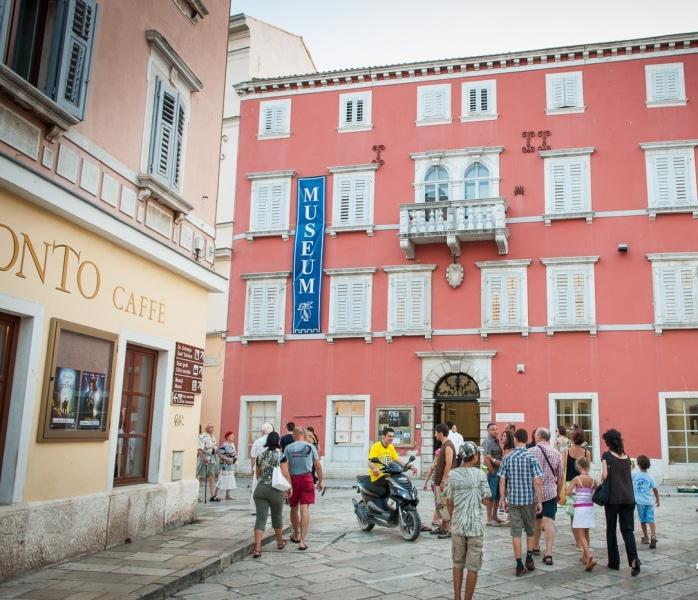
Removed from Unnamed collection
Civic Museum Rovinj 
Located in the baroque palace of the XVII / XVIII century of the Count Caliphs, the museum was founded in 1954 on the initiative of some artists of Rovinj. Their idea was to gather the rich cultural heritage of the city in a single exhibition space. The museum serves as a town gallery and exhibits its precious collection to the public in a permanent exhibition.
In its half-century of life it has gathered a rich collection that includes sections of contemporary art, old masters, archaeological, ethnological, books, documents and photographs on the activities of the partisan battalion Pino Budicin and more.
The Museum houses one of the most important collections of ancient masters in Croatia, in particular the Italian masters from the fifteenth to the nineteenth century. The Renaissance is represented through works by artists from the circle of Giovanni Bellini and Bonifacio de Pitatija (Adoration of the Magi), while the most important exponents of Baroque are Marco Ricci (On the road to Emmaus), Antonio Zanchi, Jerome Romanin, Nicola Grassi, the school of Guido Reni and Bernardo Strozzi and others. https://www.inforovinj.com/eng/rovinj/znamenje/zavicajni-muzej-rovinj.asp
Map
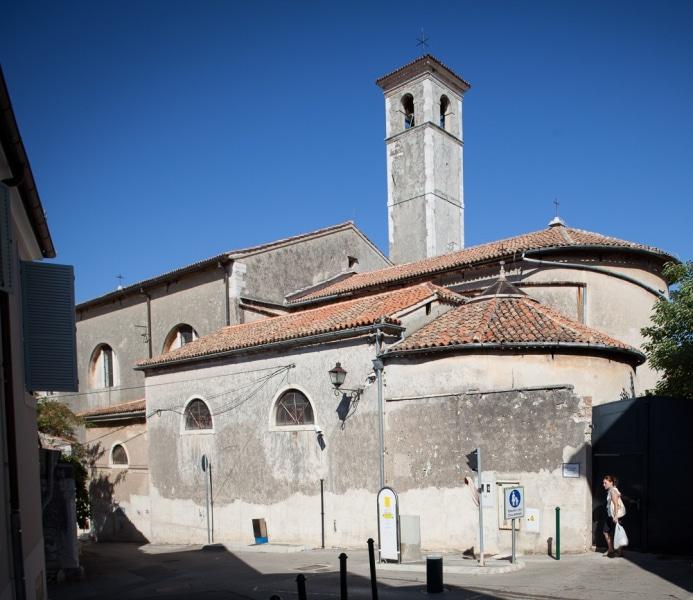
Removed from Unnamed collection
Franciscan Monastery Rovinj 
Rovinj represented an exception among the cities on the west coast by the lack of a Franciscan monastery during the first period of the existence of the order. Only at the end of the fifteenth century, the Diocese of San Geronimo decided to build one on the island of St. Andrew (Red Island) near Rovinj, upon the site of the Benedictine hospice and the church from the sixth century. According to tradition, the monastery was founded by St. John of Capistrano, a famous missionary engaged in the fight against the Turks. His body is kept in the Franciscan monastery of Ilok, in eastern Croatia.
In 1807, after nearly four centuries after its foundation, the monastery of Saint Andrew was closed by Napoleonic authorities.
In the early eighteenth century, the St. Anthony's Franciscan reformers built a new monastery in the north, in the continental part of the city, which was not yet connected to the mainland.
In 1696 the City Council invited the Franciscans to come to Rovinj to erect a new hospice. The approval of the Doge Alvise Mocenigo arrived in 1700 and two years later, in 1702 the construction of the church and hospice began. On that occasion, for the first time explosive was used in Rovinj to derive rock tanks for rainwater. https://www.inforovinj.com/eng/rovinj/znamenje/franjevacki-samostan.asp
Map

Removed from Unnamed collection
Geological Park Fantazija Monfiorenzo 
Near the road Rovinj-pula, about 2 kilometres far from the centre of the City of Rovinj, in the locality of Monfiorenzo, is situated the quarry phantasy, a geological park of remarkable beauty and importance. According to the expert opinion of numerous scientists, it is one of the most significant natural monuments in the world in the perspective of the karst phenomenon. The lime-stone of the quarry phantasy, like the open book pages, illustrate the history of the evolution of the terrestrial crust.
Various layers give evidence of the existence of the fossilized meadows consisting of sea-weeds, which, blended with lime-stone silt, were drifted on the shore by strong currents during the last 130 million years.
The quarry phantasy will reveal to a more careful visitor a considerably big number of furrows made of black and white dolomiti layers. Furthermore, there are fissures formed by tightening and exsiccation of the silt that had been squeezed into the previously created sediment.
The lower part of these stony layers was formed below the sea level, while the upper part is the result of the high-tide. https://www.inforovinj.com/eng/rovinj/znamenje/monfiorenzo.asp
Map
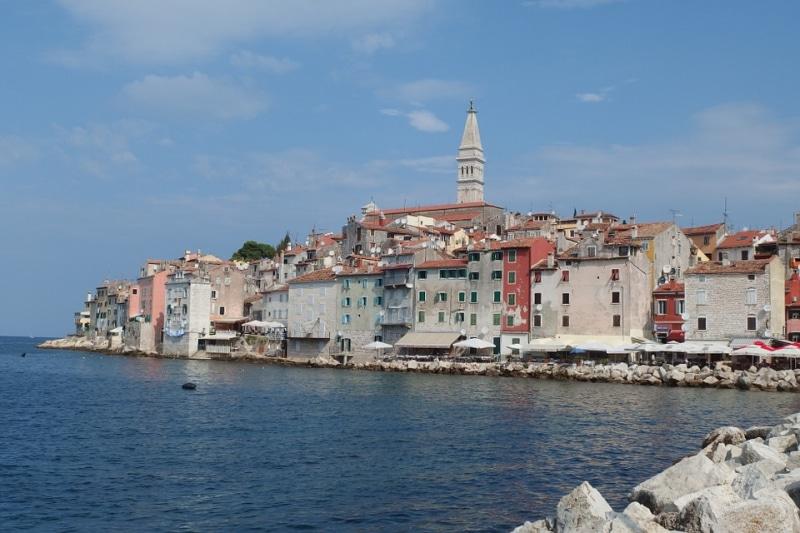
Removed from Unnamed collection
The Old Town 
The Old Town is where life started on what used to be an island secured by medieval walls. The city had seven gates, three of which have been preserved to this day: The Gate of St. Benedict, The Portica and The Gate of the Holy Cross. The first archeological traces of life date back to the Bronze Age, and the old city started developing in the 3rd century. The limited space conditioned the construction of narrow houses, narrow streets and small squares. It's an unique place to visit.
The town clock and a small fountain are located on the main town square. The town clock once represented the tower on the south corner of the former town walls. Built in the 12th century, the tower was extended several times. The town clock with its Venetian lion, the symbol of Serenissima dating back to mid-19th century, was situated on the town gate fort near the Califfi Palace. http://www.rovinj.co/en/meet-rovinj/culture-and-history/
Map
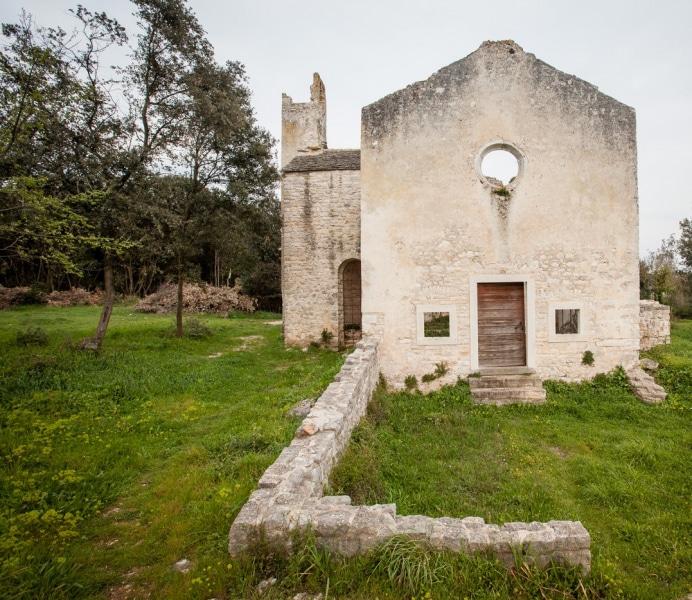
Removed from Unnamed collection
Church of St.Thomas Rovinj 
St. Thomas church is situated 4 kilometres north of Rovinj, next to the old railway line that led from Rovinj to a small place Kanfanar. This edifice has a cross ground plan lately completed by a church tower placed on its north side. There is a six metres high apse, semicircular on the inside part and polygonal on the outside part.
Lateral windows are enriched by semi-circular apses as well, although being constructed of smaller size. These apses are connected with the central nave by a high semi-circular passage. In the north part of the church, the original paving was discovered along with the preserved stand of shrine partition with several niches for pilasters. Above the central part, the remains of arches that upheld the retracted construction high above the roofing are still visible.
A radical constructional intervention was undertaken on the church in the 16th century, changing completely its original form. Since the lateral arches were walled in the whole edifice got one nave. The west part of the edifice was significantly shortened and altered by a new forepart with two square windows. https://www.inforovinj.com/eng/rovinj/znamenje/crkva-sv-tome.asp
Map

Removed from Unnamed collection
Monkodonja 
The fort of Monkodonja is located about 5 km south-east of Rovinj, and was discovered in 1953 when the first excavations were carried out. Since 1997, detailed research and a partial architectural reconstruction of the site is being conducted.
The town, surrounded by walls, built with blocks of stone with the dry technique is located on a hill and its side terraces that are created with stones quarried and crushed from the hill to give space to the village. The casteliere was inhabited in the period from 2000 until 1200 BC. https://www.inforovinj.com/eng/rovinj/znamenje/monkodonja.asp
Map

